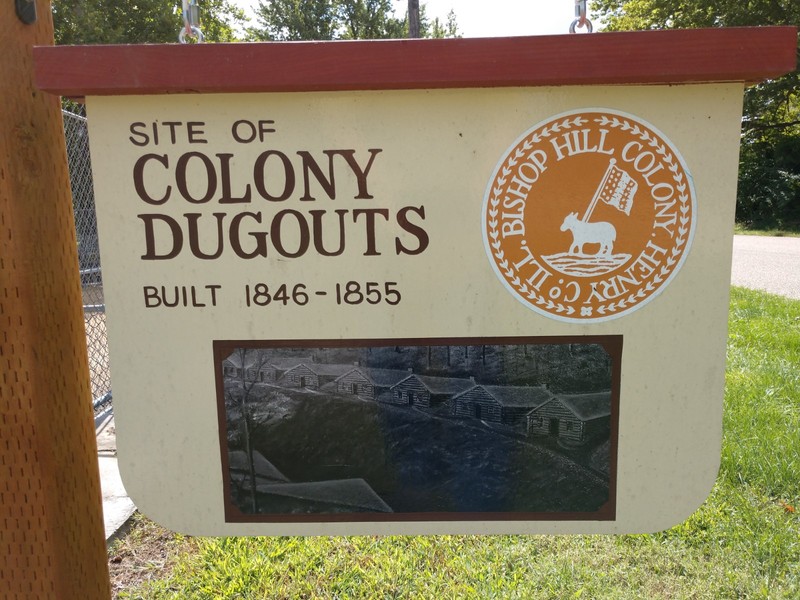The Dugouts
Introduction
Text-to-speech Audio
Imagine the gully from the Meat Storage Building continuing up through the ball diamond and into the town square. Look carefully and you will see one of the largest and oldest trees in the park is a sycamore, noticeable due to its peeling bark revealing a lighter colored under-bark and its distinctive spiky seed pods. Sycamore usually grow along a creek or stream bed. It was here, within this gully that the first wave of Swedish immigrants spent their first winter. They dug out an earthen cavern and built a log cabin facade. There was a smoke hole in the back so their fires could warm them on the frigid winter nights. There were several dug-outs, one for single women, one for single men, and a few for family groups, but it must have been a long, cold, and difficult winter. Their food supplies were eaten during the long journey from Sweden. This was the Western Wilderness so there was no farm market economy to sell them food. Starvation lead to sickness and nearly 100 souls perished. It is hard to imagine the hardship in these dark dank muddy holes in the ground. But not only did they survive, they eventually thrived, building the entire community you now see around you.
Images
The Dugouts no longer exist, but it was here along this gully, mostly filled in but the destruction of Big Brick.

Cite This Entry
DeDecker, Todd. "The Dugouts." Clio: Your Guide to History. November 3, 2020. Accessed April 8, 2025. https://theclio.com/entry/95114/tour/8/reverse
Sources
Official Walking Tour Bishop Hill Illinois Guidebook to Buildings, 2010.
Wheat Flour Messiah, Eric Jansson of Bishop Hill by Paul Elmen Southern Illinois University Press 1997
History of Bishop Hill, A Story of Swedish Pioneers Collected and Compiled by Theo J. Anderson, self-published.
Image Sources(Click to expand)
Brian "Fox" Ellis

